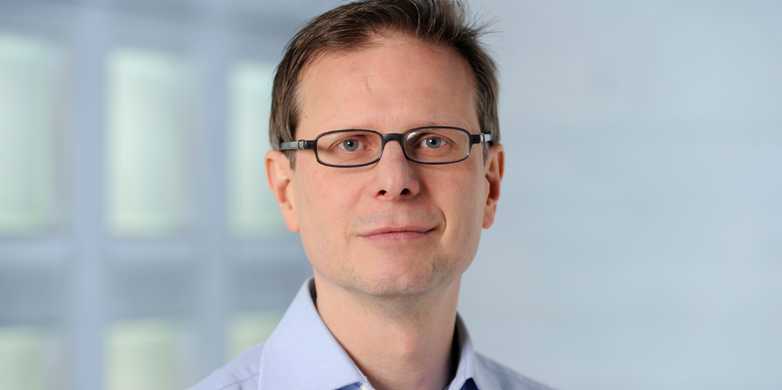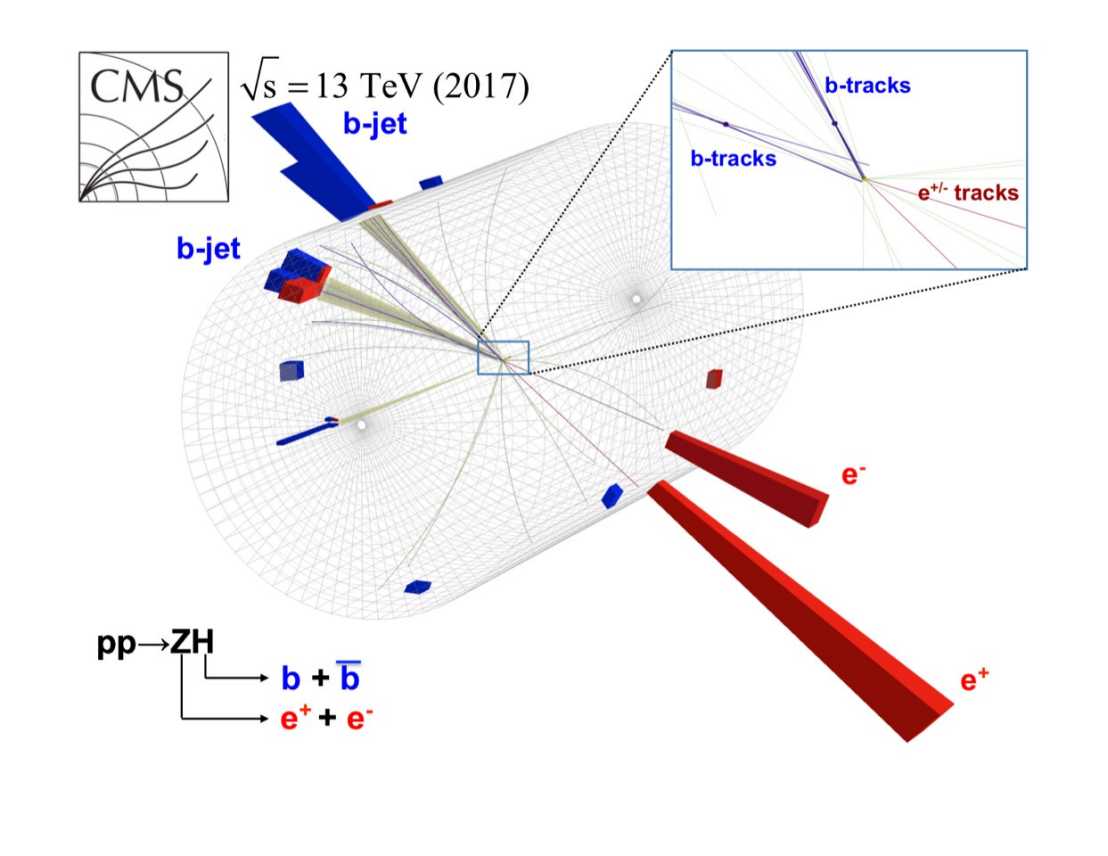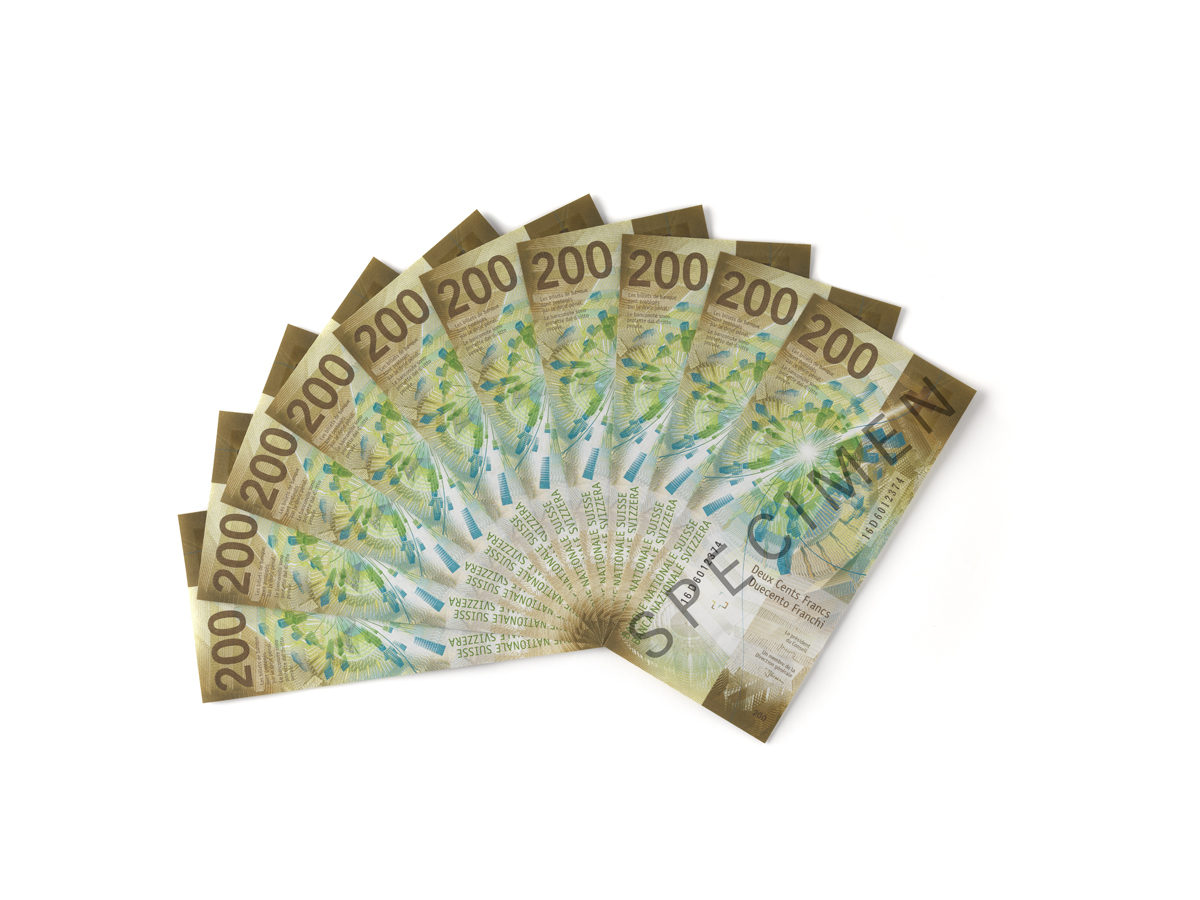Banknote to illustrate basic research
Today, the ATLAS and CMS collaborations both announced new findings on the Higgs boson from experiments undertaken at CERN’s Large Hadron Collider (LHC) – shortly after the Swiss National Bank’s release of its new 200 franc note with particle physics in pride of place. ETH professor Günther Dissertori played an instrumental role in both projects.

Professor Dissertori, CERN has just presented new findings on the Higgs boson – just as the Swiss National Bank (SNB) releases its new 200 franc note, an initiative in which you played a key role. Which is the bigger achievement in your opinion?
Günther Dissertori: Having the chance to contribute to the design of a banknote has been an incredible and one-of-a-kind undertaking. It’s a great honour to have been asked to work with the SNB. I’ve very much enjoyed working with the graphic design team, who throughout the process showed a keen interest in the science behind the art on the new note.
How did your colleagues at CERN and ETH react to your involvement?
The reaction has been extremely positive. When the banknote was first displayed at CERN, many colleagues were pleasantly surprised.
How did you come to be involved in designing the note?
The SNB had laid down some broad themes for the new banknotes, one of which was the topic of science. At some point, I was contacted by the lead graphic designer on the project, Manuela Pfrunder; she wanted the new 200 franc note to depict a particle collision and the history of the universe. The hand with the three outstretched fingers representing the coordinate system was part of the design right from the initial sketches. That was the first I knew about the banknote.
What has been your contribution?
My role was to give concrete form to the graphic design team’s ideas – the best way to depict a particle collision or a particle detector, for instance. The front side of the note depicts the development of the universe, and I was heavily involved in the discussions around how best to summarise the most important time periods and moments in the universe’s history. On top of that, I also suggested which periods and numbers I thought should be included on the security strip.
How long did you work on the project?
In total, the project went on for several years. It’s the most confidential project I’ve ever been involved in; I couldn’t even tell my closest colleagues. Even at my first meeting with the CERN directorate, there were SNB representatives involved to ensure that nothing got out.
You sound very enthusiastic.
It really was one of the best projects of my career, particularly in terms of outreach. To have basic research so prominently displayed on a banknote is a real testimony to the value placed on scientific research in Switzerland. We should be happy about that here at ETH Zurich.
So are we going to have to revise the note after these new findings on the Higgs particle?
(With a grin) No, the new findings won’t change anything about the note. It’s pure coincidence that the results and the banknote have come out at the same time.
Can you tell us a bit about the exact implications of the new findings?
Early this summer we published a paper showing a direct coupling of the Higgs particle to the top quark. Today, we have announced that we have also observed a direct coupling to the bottom quark. These are important steps on the road to a full characterisation of the Higgs boson particle. Crucially, these findings are in perfect agreement with the theoretical predictions of the standard model of particle physics.
What contribution did researchers at ETH Zurich make to these discoveries?
ETH Zurich played a major role in the measurements with the CMS detector, in data analysis and in preparing the results. First and foremost, this involved postdocs and doctoral students from the groups headed by Rainer Wallny, Christoph Grab and myself. These three ETH groups, together with that of Assistant Professor Lesya Shchutska, work closely together like a single team. A clear demonstration of ETH’s contribution is that ETH postdoc Luca Perrozzi was given the opportunity to present the findings of the CMS collaboration at today’s CERN seminar specially organised for the purpose. In terms of the data analysis, we also have a good working relationship with our colleagues at PSI and at the University of Zurich.

How did this pleasing result come about?
Over the last two years in particular, the LHC particle accelerator has been operating extremely well. Last year, collision rates even exceeded the design level, quickly generating a very large data set. The detectors are also running very well, even though they have been in operation for many years now. All of this is not something you can take for granted. But the fact that everything has been working so well has really speeded up analysis. Ultimately, the key to success has been the implementation of modern data analysis methodologies such as machine learning and deep learning algorithms. These techniques have allowed us to obtain more statistically significant results with the same data set than with previous approaches. We have also been helped by the healthy competition between the ATLAS and CMS experiments, as well as the brilliance and motivation of the young people who carried out this complex analysis.
What’s next for CMS?
Experiments at the LHC will continue until the end of 2018, after which there will be a two-year break to allow for important updates and maintenance work to be carried out on the accelerator and detectors. After that, the facility is expected to run again from 2021 to 2023, followed by another significant break from 2024 to 2026. During that time, we plan to significantly upgrade the accelerator and the ATLAS and CMS detectors, allowing us to work with much higher beam intensities.
What do you hope to achieve through this expansion?
The plan is for the accelerator to run for another ten years or so at significantly higher intensity. By doing that, we hope to increase the volume of data by a factor of ten. This will allow us to investigate other important aspects of the Higgs boson that we simply cannot examine at the present level of intensity. And of course we will be on the lookout for new phenomena. We’re far from the end of this particular journey. It’s also important to bear in mind that the LHC and its experiments represent a colossal scope and quality of infrastructure that makes it unique in the world. We have a duty to get every last bit of use out of this infrastructure, and to use this instrument to measure everything that can possibly be measured. Maybe we’ll even find new physics.
What do you mean by a new physics?
New physics might refer, for instance, to new elementary particles that had escaped detection so far. Maybe we’ll find new particles that could have something to do with the universe’s dark matter. Also, there are theories that say there may be other spatial dimensions – dimensions that produce measurable effects in particle collisions. Ultimately, it’s a question of how our world is built at the smallest possible level. When we understand that, we’ll have a better understanding of how our universe looked shortly after the Big Bang; and the better we understand that, the better we understand why our universe has developed as it has.
About
Günther Dissertori has been Professor of the Institute for Particle Physics and Astrophysics at ETH Zurich since 2001. In the past years, his research group focused on the construction, commissioning, operation and data analysis of the external pageCMS experimentcall_made at Cern. From 2016 to 2018 he was Deputy Spokesperson of the CMS experiment.


